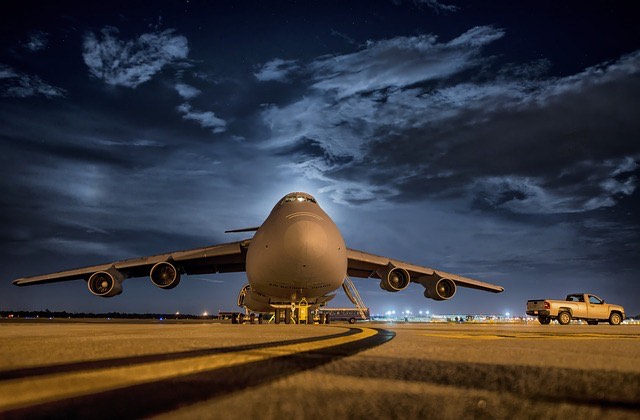
Ensuring the safety and dependability of air travel hinges indispensably on the meticulous maintenance of aircraft.While pilots command the skies, ground support personnel play a pivotal role in maintaining aircraft in optimal condition. This article delves into the fundamental principles of ground support, examining the core elements essential to aircraft maintenance – the ABCs of Aircraft Maintenance.
1. A for Amping Up Efficiency: The Role of Aircraft (GPU)
An essential component in aircraft maintenance and on-ground operations, the aircraft ground power unit (GPU) serves the critical function of supplying external power to an aircraft while it is stationary on the ground.
This enables the deactivation of the onboard auxiliary power unit (APU) or primary engines. GPUs guarantee a consistent and dependable power supply for crucial activities like avionics testing, pre-flight checks, and maintenance procedures.
This not only preserves the aircraft’s internal power reserves but also elevates operational efficiency and flexibility during ground-related tasks.
2. B for Battery Maintenance
Aircraft heavily rely on a complex system of batteries to power various onboard instruments and systems, ranging from critical avionics to lighting systems. Ground support personnel shoulder the responsibility of ensuring that these batteries are not only adequately charged but also in impeccable working condition.
This involves conducting regular checks, prompt replacements when necessary, and strict adherence to proper storage and charging protocols. A well-maintained battery system is not merely a necessity; it is the linchpin for the smooth and reliable operation of the aircraft, ensuring uninterrupted power supply during every phase of the flight.
3. C for Communication Systems
Effective communication is paramount in aviation, encompassing both airborne and ground operations. Ground support personnel shoulder the responsibility of meticulously maintaining the aircraft’s communication systems.
This involves not only checking radio equipment and ensuring clear communication channels but also troubleshooting any issues that may arise in real time. A seamless communication system is not just a convenience;
it is a critical component for the coordination of ground operations, air traffic control, and ultimately, ensuring the utmost safety throughout the entirety of the flight.
4. D for Data Monitoring and Analysis
Modern aircraft are equipped with sophisticated monitoring systems that constantly collect and analyze data during flights. Ground support personnel play a crucial role in monitoring this data, identifying trends, and analyzing performance metrics.
By keeping a close eye on these parameters, maintenance crews can proactively address potential issues before they escalate, contributing to the overall efficiency and safety of the aircraft.
This proactive strategy not only elevates safety standards but also establishes a cost-effective and well-coordinated maintenance process, ultimately optimizing the aircraft’s performance throughout its operational lifespan.
5. E for Engine Maintenance
The heart of any aircraft is its engine, a complex marvel that demands meticulous maintenance from ground support crews. This entails routine checks, comprehensive inspections, and when deemed necessary, the expert replacement of engine components.
Beyond optimizing performance, regular maintenance serves to significantly extend the lifespan of these vital components, thereby diminishing the risk of in-flight failures and contributing immeasurably to the heightened overall safety standards of the aircraft and its passengers.
6. F for Fuel System Checks
Fuel is the lifeblood of an aircraft, and ground support personnel must ensure that the fuel system is in top-notch condition. This includes inspecting fuel lines for any signs of wear or corrosion, checking for leaks with meticulous attention, and consistently monitoring fuel quality to meet stringent aviation standards.
Proper fuel management not only ensures the efficient operation of the aircraft but also plays a crucial role in preventing potential safety hazards associated with fuel-related issues, further emphasizing the critical importance of this aspect in aviation safety and reliability.
7. G for Ground Handling Safety
Ground support personnel are involved in various activities on the tarmac, encompassing the precise loading and unloading of cargo, as well as expertly guiding the aircraft on the ground.
Ensuring ground handling safety is paramount, and personnel undergo rigorous training to use the necessary equipment with precision, follow established protocols, and maintain vigilant awareness to prevent accidents.
Strict adherence to safety procedures not only safeguards the well-being of both personnel and the aircraft but also fosters an environment of operational excellence and reliability in the aviation industry.
8. H for Hydraulic System Maintenance
Many critical aircraft systems, including landing gear and brakes, rely on intricate hydraulic systems. Ground support crews shoulder the responsibility for the meticulous maintenance of these systems. This involves conducting regular checks for leaks, monitoring proper fluid levels, and assessing the overall condition of hydraulic components.
The importance of a well-maintained hydraulic system cannot be overstated; it is indispensable for ensuring the safe operation of an aircraft, particularly during critical phases such as takeoff and landing. Sustained vigilance and comprehensive maintenance protocols are essential to maintain the utmost standards of safety within the aviation industry.
Conclusion
In the dynamic world of aviation, ground support personnel are the unsung heroes who ensure that aircraft are not only flight-worthy but also operate at the highest standards of safety and reliability. By mastering the ABCs of aircraft maintenance – from meticulous inspections to hydraulic system maintenance – ground support crews contribute to the seamless and secure operation of the aviation industry.

Leave a Reply